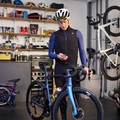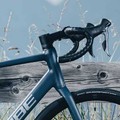Our guide to the world of nutrition; what all of the key terms mean, what purposes different products serve and how you can use them to reach your full potential.
Cycling and triathlon nutrition is a wild and ever-expansive world of fluids, gels, jellies, bars, tablets and just about anything else you can think of putting in your stomach. Working out what you need can be daunting for anyone looking to get into the sport or even those who would consider themselves seasoned triathletes or cyclists.
The times that nutrition is required can be split into three periods:
Before exercise
During exercise
After exercise
There are four key types of product that you will need to get the most out of your training and racing; liquid hydration products, energy gels, energy bars/chews and recovery (protein) drinks/bars. Other supplements like tablets are also available and are ideal for the more experienced rider.

Before and during exercise
Let’s start with hydration. Being hydrated before you start exercising and staying topped up through your ride or run is the most important part of any athlete's nutrition plan. Unless you replace fluid that is lost during exercise your body's performance will start to deteriorate. Your heart rate will rise, your body will become less efficient at regulating its temperature, you will mentally find exertion harder and you may experience stomach issues.
In order to minimise dehydration, you have to drink as much liquid during exercise as you lose from sweat. This can be a surprisingly large amount, especially on a hot day where drinking as much as a litre an hour can often be necessary.
Liquid consumed during exercise can also be a fast and easily-digestible way of providing yourself with energy for your muscles to burn. Carbohydrates are the most common source of energy, found in dissolvable drinks tablets or powder. Ideally, you want around a 6 to 8% carbs composition. Carbohydrates are converted by your body to make glucose for your muscles to burn.

The real secret to staying hydrated during exercise is finding your flavour. Trying out a range of energy tablets and powders and choosing a few that you really like will encourage you to drink more.
Another pro-tip is to avoid carbonated drinks. While an ice cold Coke may sound appealing, fizzy drinks can mess with the balance of your stomach when exercising.
During exercise
Solid food such as energy bars and chews can provide you with essential carbohydrates as you exercise while also keeping hunger at bay. Studies show that consuming 30 to 60 grams of carbohydrate per hour during strenuous exercise is the best way to achieve optimal energy delivery.

Different people will be able to digest different amounts of carbohydrate depending on their metabolism and body type so finding what works for you is key. Solid food often provides slow burning energy, while gels and drinks provide a quick boost.
Most cyclist or triathletes are training towards some sort of goal or event. Whether it is a race, sportive or just getting that PB on Strava. Trying different nutrition products on your big day can be a bad idea as your body may not be used to it or you may not like the taste. Stick to what you know works for you.
Many experienced athletes opt solely for solid food as they find gels do not agree with their stomachs, however, finding your own balance is essential to optimising your performance.

During exercise
Perhaps the most common place of all nutrition products for the keen cyclist or triathlete is the trusty energy gel. Gels can serve you with a wide range of beneficial ingredients including carbs, caffeine and electrolytes.
Electrolytes, like carbohydrates, form an essential part any athlete’s nutrition plan. Normally found in gels and drinks, electrolytes consist of essential minerals such as sodium, potassium, and chloride. When these minerals are lost through sweat it is important for your body to replace them as an electrolyte deficiency can cause cramp.

Caffeine is another potential source of energy during your exercise, which, when used correctly, can give you a big boost. Caffeine can help to increase your heart rate, release sugar from the liver and improve mental faculties. Using a caffeine gel or drink within the last quarter of a tough ride or run can help to give you that extra burst over the finishing line.
After exercise
What you consume immediately after you exercise is critical for recovery. Your body's metabolism is heightened for 30 minutes after you finish your exercise so using a protein or recovery shake or protein bar to boost muscle growth and repair is an easy way to make the most of your efforts. Protein is used by your body to build and repair tissue damaged during exercise.

Let us know what works best for you via Twitter or Facebook. If you have any tips feel free to share them.







